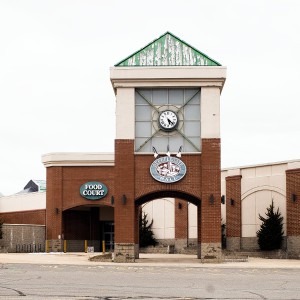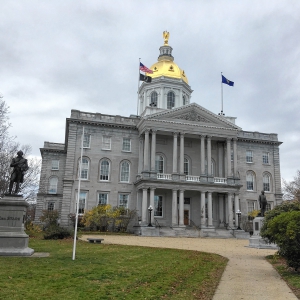Franklin Pierce statue was criticized even before its creation
| Published: 06-17-2020 7:47 PM |
The world of poor Franklin Pierce, 151 years in his grave, turns again.
The demand on behalf of African American law students that his name be removed from the University of New Hampshire Franklin Pierce School of Law in Concord reflects the current moment in the country’s tragic racial history. The students are right and will almost certainly succeed.
If they do, the next target will surely be the statue of Pierce just outside the State House yard. The leap from banishing his name to banishing his image is a short one.
Pierce’s political views were unexceptional for a Democrat in his times. The Constitution protected slavery, and he supported the Constitution. As president, he was sworn to uphold it. He believed northern antislavery efforts threatened the bond between free states and slave states. He supported laws that he hoped would protect slavery where it existed. His positions won Pierce many southern friends, including Jefferson Davis, his secretary of war and later the only president of the Confederacy. But they also deepened the national crisis.
Then, during the Civil War, Pierce made the mistake of speaking out in anger. Before a massive crowd on the State House lawn on the Fourth of July in 1863, he clung to his philosophy at the very moment that yet more northern blood was soaking battlefields in Vicksburg and Gettysburg. “The cause of our calamities,” he said, “is the vicious intermeddling of too many of the citizens of the northern states with the constitutional rights of the southern states.” Now that President Lincoln had proclaimed emancipation of the slaves in seceded states, he predicted, the war “cannot fail to be fruitless in everything except the harvest of woe which it is ripening for what was once the peerless republic.”
Union veterans had not forgotten these words 25 years later when a proposal to erect a statue honoring Pierce first arose.
The debate over the statue offers an example of shifting generational winds highly relevant to today’s efforts around the country to remove statues of soldiers and politicians who were wrong or blind on race. To follow the story, it helps to know that the two major parties have switched places since the 1950s. Republicans dominated the North in the late 19th and early 20th centuries, Democrats the South.
Pierce was a Democrat through and through, but by 1860, eight years after he won the presidency, Republicans had wrested control of New Hampshire politics. They held it for decades after the war. The Grand Army of the Republic, the Civil War veterans’ organization, became a mighty force. Many of its members were Republican legislators when Democrats first proposed a statue of Pierce, the only U.S. president from New Hampshire.
Article continues after...
Yesterday's Most Read Articles
 Neighboring landowner objection stalls Steeplegate redevelopment approval
Neighboring landowner objection stalls Steeplegate redevelopment approval
 Lawyers and lawmakers assert the Department of Education is on the verge of violating the law
Lawyers and lawmakers assert the Department of Education is on the verge of violating the law
 Youth rally against New Hampshire’s bill allowing medical aid in dying
Youth rally against New Hampshire’s bill allowing medical aid in dying
 Body of long-missing hiker found, pinned by boulder in Dry River
Body of long-missing hiker found, pinned by boulder in Dry River
 UNH seeks vandal who accused university of genocide in spray-painted message
UNH seeks vandal who accused university of genocide in spray-painted message
 As site testing begins on new middle school site, activists file to put location debate on the ballot
As site testing begins on new middle school site, activists file to put location debate on the ballot
Republicans blocked the Pierce statue year after year. Their arguments were scathing. A Claremont veteran called Pierce “a lasting disgrace to New Hampshire.” A Salem legislator said: “Facts are stubborn things, and the facts that stained the record of Franklin Pierce will still be facts when Gabriel blows his horn.” John Clough of Manchester, who had been left for dead on the battlefield at Chancellorsville, argued that while he lay there in misery for 16 days, Pierce was back in New Hampshire conspiring with Confederates against the war effort.
Then, in 1912, Democrats caught a break. The Progressive movement split the Republican Party, helping Democrats win the presidency, New Hampshire’s governorship and both houses of the Legislature.
Knowing his election was a fluke, Samuel Felker, the first Democratic governor since 1874, set right to work to get the Pierce statue up before his term expired. By May 1913, the bill was signed, the money appropriated.
Daniel Chester French, an acclaimed sculptor with New Hampshire roots, volunteered to make it but said he needed three years to do it. The statue committee looked elsewhere. It settled on Augustus Lukeman, a protégé of French’s whose most famous commission, which came later, was the enormous Stone Mountain, Ga., sculpture of Jefferson Davis, Robert E. Lee and Stonewall Jackson.
Lukeman presented a model of his Pierce at the New Hampshire Historical Society on the last day of 1913. It was installed and ready for dedication by Nov. 25, 1914. Felker was a lame-duck governor by then, having lost his bid for re-election, but he had seen the project to completion.
Justice Oliver Branch of the state Supreme Court spoke at the dedication. He reminded his listeners that President Pierce had supported laws to protect slavery in part because his oath of office to uphold the Constitution. Branch justified the South’s demand that its right to practice slavery “should not be questioned or attacked.” The time had come, he said, for northerners to accept that southerners had been sincere in their belief that secession was their only recourse if they wished to maintain their constitutional rights.
Because abolitionists were a minority in the North, Branch declared that “the destruction or continuance of slavery was of secondary concern” in the war. Pierce, he said, “may have made mistakes, but he was not a traitor, nor an ingrate, nor a coward, but a true lover of his country.”
The next day’s Concord Daily Monitor editorialized that the statue symbolized the end of half a century of resentment and hatred “which for too many years blinded the eyes of New Hampshire to the real eminence of its one President.”
Pierce’s resurrection came during a dreadful stretch of our country’s racial history.
In 1913, black veterans were barred from attending the 50th anniversary celebration of the battle of Gettysburg. A “Jim Crow reunion,” the Pulitzer Prize-winning historian David Blight later called it. Blight saw the event as part of a national effort to recast the Civil War as “a tragedy that led to greater unity and national cohesion” rather than “the crisis of a nation deeply divided over slavery, race” and other national issues.
Eleven days before the statue dedication, a mob of 1,500 white men, women and children lynched John Evans from a light-post in St. Petersburg, Fla. When he wrapped his legs around the pole to keep from strangling, a woman in the crowd shot him, setting off a barrage of gunfire that tore him to pieces. Evans was one of more than 100 African Americans lynched in the United States during the time the Pierce statue was debated, created and dedicated.
More than a hundred years after the Pierce statue went up, a new generation set in motion by the brutal police killing of an African American has taken to the streets. In concert with many veterans of the fight, they are determined to end racial injustice in America.
More power to them.
The law students have a good point about removing Pierce’s name from the state university law school, and the same logic applies to the statue.
If the decision were mine, I would move it to a less conspicuous spot rather than destroy it. The Pierce Manse remains open to the public a few blocks north on Horseshoe Pond Road. Its lawn would be a good place for his statue. It is important to remember our national past, and there is a difference between memorialization and glorification.
When it comes to race, New Hampshire has often been on the wrong side of history. Now is a good time to change that.
(Mike Pride is editor emeritus of the Monitor. He is grateful to historian Michael J. Connolly for many of the details in this column. Connolly’s excellent “ ‘History has rendered its verdict upon him’: The Franklin Pierce Statue Controversy” ran in the April 2013 issue of The Journal of the Gilded Age and Progressive Era.)







 For the first time, education commissioner speaks publicly about minimum standards revision, but he faces skepticism
For the first time, education commissioner speaks publicly about minimum standards revision, but he faces skepticism Adam Montgomery sentenced to minimum 56 years on murder charges in young daughter’s death
Adam Montgomery sentenced to minimum 56 years on murder charges in young daughter’s death Following budget cut, Pembroke revisits future of elementary school re-build
Following budget cut, Pembroke revisits future of elementary school re-build
